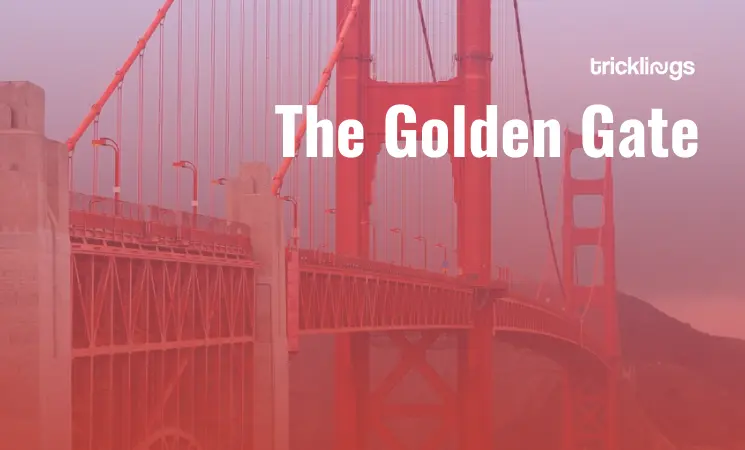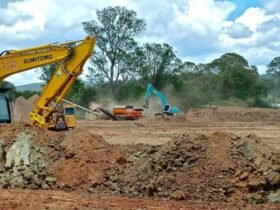The text explores the Golden Gate Bridge’s history, construction, and maintenance, one of the world’s most famous landmarks. From its inception in the 1920s to its completion in 1937, the bridge has faced numerous challenges, including financial difficulties, opposition from various entities, and construction hazards. Despite these obstacles, the bridge has become an iconic symbol of San Francisco, attracting millions of visitors and serving as a vital part of US road infrastructure.
Interesting and Main Points:
- Due to its width, depth, and harsh environmental conditions, the Golden Gate Strait posed significant challenges to bridge construction.
- Joseph Strauss, the bridge engineer, faced opposition and criticism but collaborated with other designers to create the bridge’s final design.
- Construction involved erecting massive towers, suspending cables, and installing a concrete roadway.
- The bridge’s safety features, including an innovative safety net, saved many workers’ lives during construction.
- The bridge’s iconic “international orange” color was chosen for visibility and aesthetic appeal.
- Despite opening in 1937, ongoing maintenance and seismic retrofitting efforts continue to ensure the bridge’s safety and longevity.
Facts about The Golden Gate:
- The Golden Gate Bridge, spanning the Golden Gate Strait in California, was completed in 1937.
- Construction of the bridge faced opposition from various entities, including the Southern Pacific Railroad Company and the US Department of War.
- The bridge’s towers weigh 22,000 tonnes each and stand 746 feet tall.
- The bridge’s main cables are formed of 27,572 wires, totaling 80,000 miles in length.
- Since its completion, over 2 billion cars have crossed the bridge, making it a vital piece of US road infrastructure.
- The bridge’s maintenance involves a team of 110 full-time personnel and ongoing efforts to protect it from corrosion and seismic activity.
- The bridge’s iconic “international orange” color was chosen for visibility and aesthetic appeal, becoming synonymous with San Francisco.
Questions:
What were the main challenges faced during the construction of the Golden Gate Bridge, and how were they overcome?
The main challenges during the construction of the Golden Gate Bridge included the width and depth of the Golden Gate Strait, harsh environmental conditions, and opposition from various entities.
To overcome these challenges, the bridge engineers collaborated on innovative designs, implemented safety measures, and persevered through financial difficulties and public opposition.
How did public opinion and government funding influence the construction timeline and completion of the bridge?
Public opinion and government funding played significant roles in influencing the construction timeline and completion of the bridge.
Despite initial opposition and financial setbacks, public support through a bond measure secured against citizens’ properties enabled the project to proceed.
This decision, made through a referendum, demonstrated the public’s willingness to invest in the bridge’s construction despite concerns about its feasibility.
Additionally, government funding, including a credit line from the Founder of the Bank of America, provided crucial financial support to initiate construction works.
What safety measures were implemented during construction to protect workers from falls and accidents?
Several safety measures were implemented to protect workers from falls and accidents. One notable safety innovation was the installation of a safety net beneath the bridge, which saved many workers from fatal falls.
Additionally, workers were provided with safety harnesses and trained in safety protocols to minimize accidents.
Despite these measures, tragic incidents, such as the collapse of the safety net resulting in fatalities, underscored the dangers faced by construction workers.
How has the Golden Gate Bridge evolved in terms of maintenance, seismic retrofitting, and technological advancements?
Over the years, the Golden Gate Bridge has undergone maintenance, seismic retrofitting, and technological advancements to ensure its safety and longevity. Maintenance efforts include periodic repainting, corrosion monitoring, and replacement of components.
Seismic retrofitting measures, such as installing energy-dissipating devices and replacing the approach ramp towers, have enhanced the bridge’s earthquake resilience.
Furthermore, technological advancements have enabled more efficient maintenance practices and improved monitoring of the bridge’s structural integrity.
What cultural and economic significance does the Golden Gate Bridge hold for San Francisco and the United States?
The Golden Gate Bridge holds immense cultural and economic significance for San Francisco and the United States.
As an iconic symbol of San Francisco, the bridge attracts millions of tourists annually and serves as a vital transportation link connecting the city to neighboring regions.
Its distinctive “international orange” color has become synonymous with San Francisco’s identity. Moreover, the bridge’s construction and continued operation have contributed to the region’s economy, supporting tourism, commerce, and infrastructure development.
Overall, the Golden Gate Bridge symbolizes human ingenuity and engineering excellence, representing the spirit of innovation and progress.













